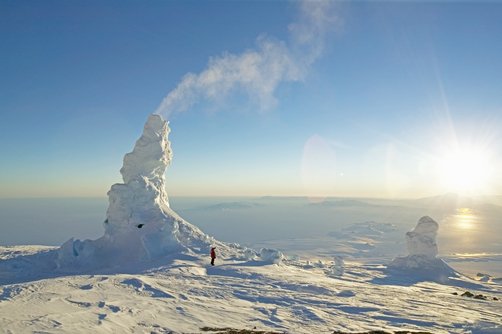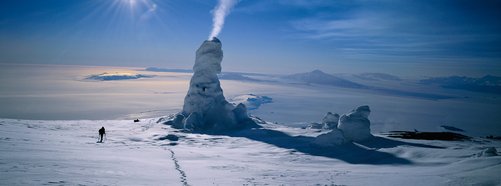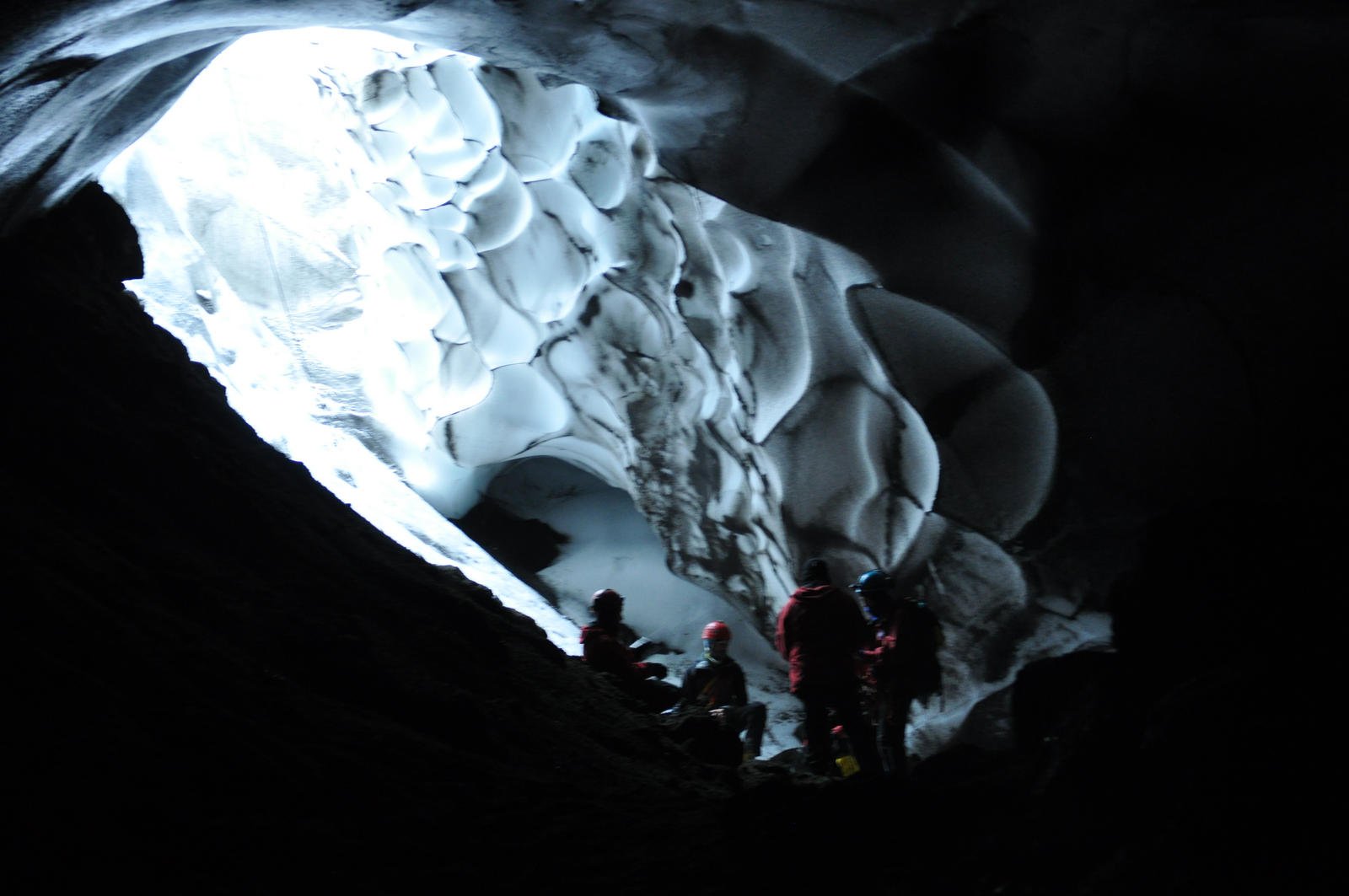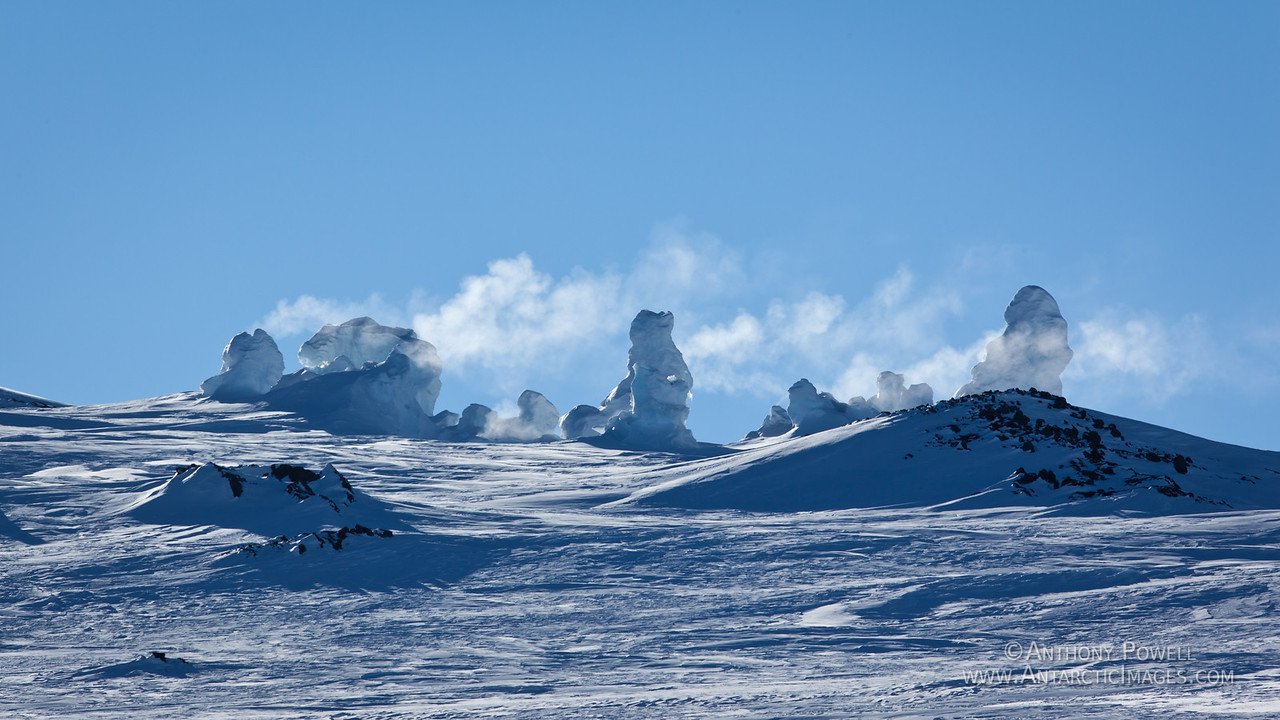
(Image source: natgeocreative.com)
Hello, my nature loving friends! Today I'm taking you on a trip to a very cold place... Antarctica.
So, you happen to wander around Antarctica. You see snow, you see ice, then some more snow, some more ice and all of a sudden you notice smoke up in the distance. "That's weird", you think to yourself. You get closer in hope of finding Santa Claus' summer house or the Night King's secret spa resort (celebrating the new dragon-entry with his generals - I couldn't help it, I'm a big GoT fan). But neither happens.
You just face a 60-feet (20-meter) tall smoking ice tower. No elves around, no White Walkers either (Thank God), nothing tasty being cooked in an underground stove. But what is it you're looking at? My friends, you've just witnessed an ice fumarole!!
An ice fumarole?
Yes. Now, let's see what exactly this is. Fumaroles are basically vents (cracks) on the Earth's crust. They emit steam and lovely toxic gas cocktails, like carbon dioxide (CO2), sulfur dioxide (SO2), hydrogen chloride (HCL) and hydrogen sulfide (H2S). They usually appear near volcanoes, where there is intense underground activity. Steam is produced by groundwater. When it gets heated up by the hot magma, it rises up and tries to get away through the open cracks.
If a fumarole forms on an active volcano in a very cold place, like Antarctica, then the hot air flow bursting out of the vent encounters a freezing cold surrounding environment (about -22 °F /-30 °C) and slowly forms a tower of gases and steam condensing into ice. Inside the fumarole humidity levels are as high as 80-100% and temperatures range from 32- 48 °F (0-6 °C). As the hot (compared to the outside frosty environment) air stream keeps coming out, the frozen tower gets taller and taller.

(Image source: natgeocreative.com)
What do they mean to us?
On its journey to the surface, the hot steam-and-gas mixture carves up the underground, forming different kinds of caves. This cave system rearranges itself every year due to the volcano activity. Inside them you won't find any carvings of prehistoric civilizations but bacteria and fungi. The in-cave environment is of great interest to scientists studying the behavior of oligotrophs (organisms able to survive on scarce resources).

(Image source: thecampingcanuck.com)
A great opportunity
There are several volcanoes with ice fumaroles around the world, Mount Baker and Mount Rainier in the Cascades, Mount Melbourne in Antarctica and several in Iceland. But there is one volcano in the Antarctica that is really important, Mount Erebus.
Mount Erebus on Ross Island, Antarctica is the perfect place for scientist. It's the second highest volcano in Antarctica, easily accessible and rich in ice towers and underground caves. Some of the caves measure up to 1 kilometer in length, providing a great chance for scientific research.
Many of the caves in Erebus are pitch black, that means that no photosynthesis can occur. The supply of organics comes from the atmosphere or ice algae that grow on the surface during the summer. When they freeze and get burried in the caves they start to melt in their "protective" environment. All this means that the caves are inhabited by chemolithoautotrophic organisms (microbes that survive through chemical reactions with the rocks). They live on carbon dioxide (CO2) fixation and it's assumed that some may use carbon monoxide (CO) for the metabolism.
It is amazing how life gets to survive on such extreme conditions and gets to make its way through harsh situations! This is a great example for us, persistence and fight no matter how difficult a situation is and how short on supplies we are. A strong will for life shall be resourceful and, therefore, effective.

(Image source: thecampingcanuck.com)
References
wikipedia.org
wikipedia.org
thecampingcanuck.com
earthref.org
livescience.com
smithsonianmag.com

My fellow Steemians, thank you for reading today's post! I hope you found it interesting enough to follow me, @ruth-girl, for more fascinating phenomena!
If you have a thing for strange phenomena, you can check the previous articles of this series:
1 - Volcanic lightning
2 - Bioluminescence
3 - Flammable Methane Ice
4 - Door To Hell
5 - Blue Lava
6 - Everlasting Lightning Storm
7 - The Mummifying Lake
Interested in science? Please, don't forget to check the @steemstem project, a community-driven project meant to promote well-written, high-quality, STEM-related content (STEM as for Science, Technology, Engineering and Mathematics). Join them in steemit.chat for more information.
And for those engaging with education, @steemiteducation is here to join all steemian educators in their common cause of making our job easier, more effective and more fun!
Until my next post,
Steem on, people, and keep smiling!

